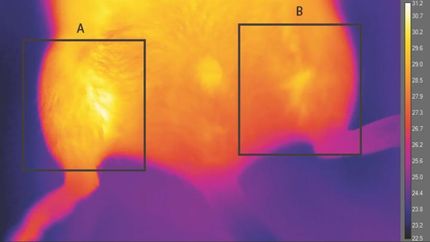Growing Bone from Stem Cells in Fat Could End Painful Graft Operations
bone grafts grown from purified stem cells originating from fat could lead to a more efficient way to regenerate bone and end the painful operations needed to collect a patient’s own bone for grafting. The results could have significant impact on those suffering from severe bone injuries or disease.
In a study published in STEM CELLS Translational Medicine, researchers were able to demonstrate the potential of a population of stem cells found in human fat to generate bone. They also identified a new factor to stimulate bone growth. The team was made up of scientists from the UCLA-Orthopaedic Hospital Department of Orthopaedic Surgery, the Orthopaedic Hospital Research Center, and the Eli and Edythe Broad Center of Regenerative Medicine and Stem Cell Research at the University of California-Los Angeles (UCLA).
Researchers have long recognized the potential of stem cells harvested from fat — which they call “adipose-derived stem cells” or ASCs — in bone engineering. For one thing, stem cells are more easily obtainable from fat than from bone marrow, which also contains stem cells, plus ASCs have already been used successfully to heal skeletal defects in animals. And while the current gold standard for collecting bone for grafting — “autograft bone,” which is that taken from the patient himself — has significant disadvantages, including the potential for complications arising from the extended operating time needed to collect it, harvesting stem cells from fat tissue is painless and poses minimal risk to the patient.
However, there are several obstacles to the use of ASCs, including the risk of infection and genetic instability when the cells are isolated and expanded in the lab. As an alternative, researchers have looked at the possibility of using stromal vascular fraction (SVF), which comes from lipoaspirate, the byproduct of a liposuction.
SVF contains a variety of cells, including smooth muscle cells, fibroblasts, adult stem cells and more. In addition, it contains blood cells from the capillaries supplying the fat cells. The SVF has the advantage of being rapidly available (there is no need for culture isolation), but it falls significantly short for bone growth, with studies showing it yields poor and unreliable bone formation.
“The main problem is this makeup of heterogeneous cell population, which can lead to unreliable bone formation,” Chia Soo, M.D., explained. She and Bruno Péault, Ph.D., and Kang Ting, D.M.D., D.Med.Sc., were the senior corresponding investigators on the study, funded by the California Institute of Regenerative Medicine (CIRM).
So the UCLA team decided to see what would happen if they purified the SVF cells to reduce their inherent heterogeneity and obtain a safer, more efficient stem cell-based therapeutic. Their goal was to isolate a population of stem cells known as perivascular stem cells (PSCs) that surround blood vessels. The team then took the bone grafts grown from the human PSCs and implanted them in mice to compare their bone-forming capacity with that of traditionally derived SVF. The results exceeded expectation.
“The purified human PSCs formed significantly more bone in comparison to traditionally derived SVF by all parameters,” Aaron James, M.D., the study’s lead author, said. “This is true in terms of potency, identity and purity.”
The human PSCs also appear to be more predictable than SVFs.
Organizations
Other news from the department science

Get the life science industry in your inbox
By submitting this form you agree that LUMITOS AG will send you the newsletter(s) selected above by email. Your data will not be passed on to third parties. Your data will be stored and processed in accordance with our data protection regulations. LUMITOS may contact you by email for the purpose of advertising or market and opinion surveys. You can revoke your consent at any time without giving reasons to LUMITOS AG, Ernst-Augustin-Str. 2, 12489 Berlin, Germany or by e-mail at revoke@lumitos.com with effect for the future. In addition, each email contains a link to unsubscribe from the corresponding newsletter.



















































